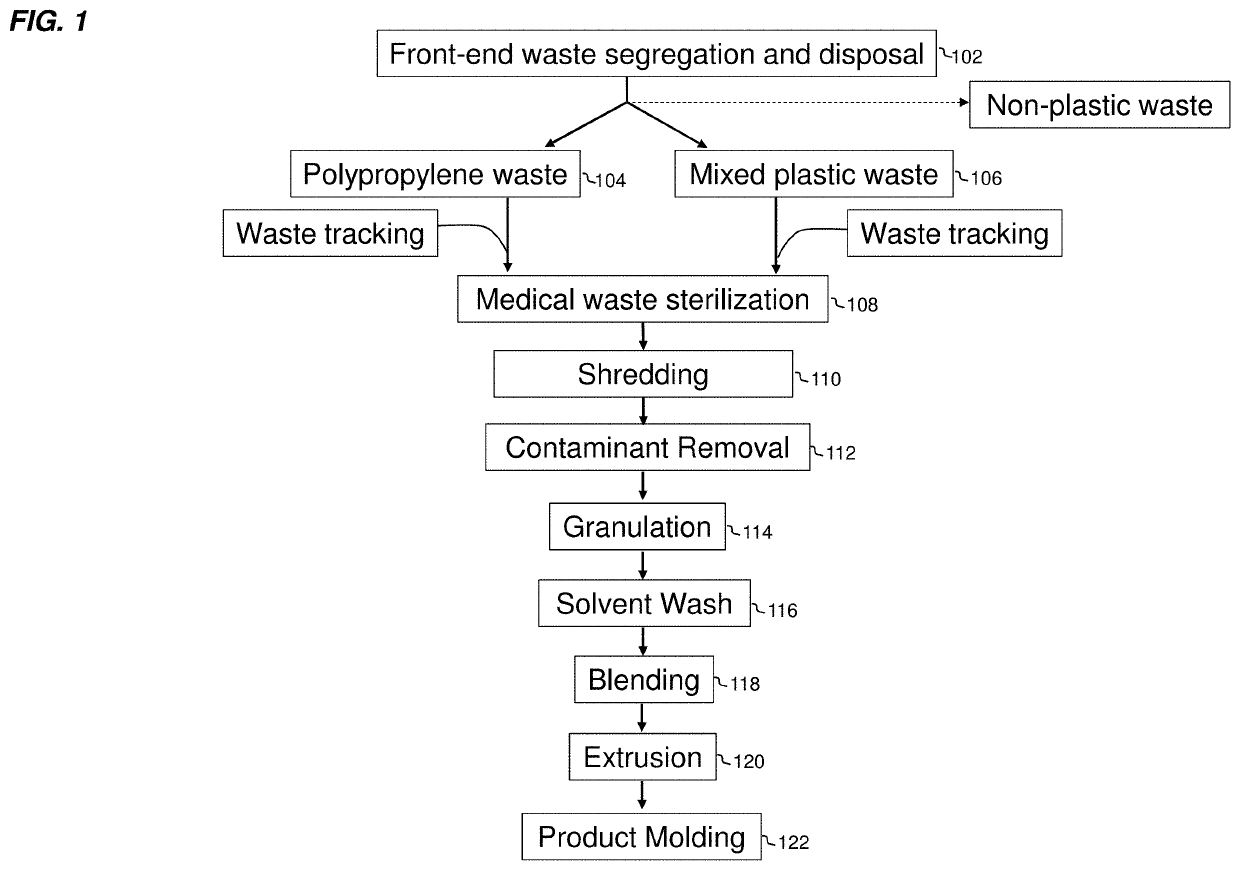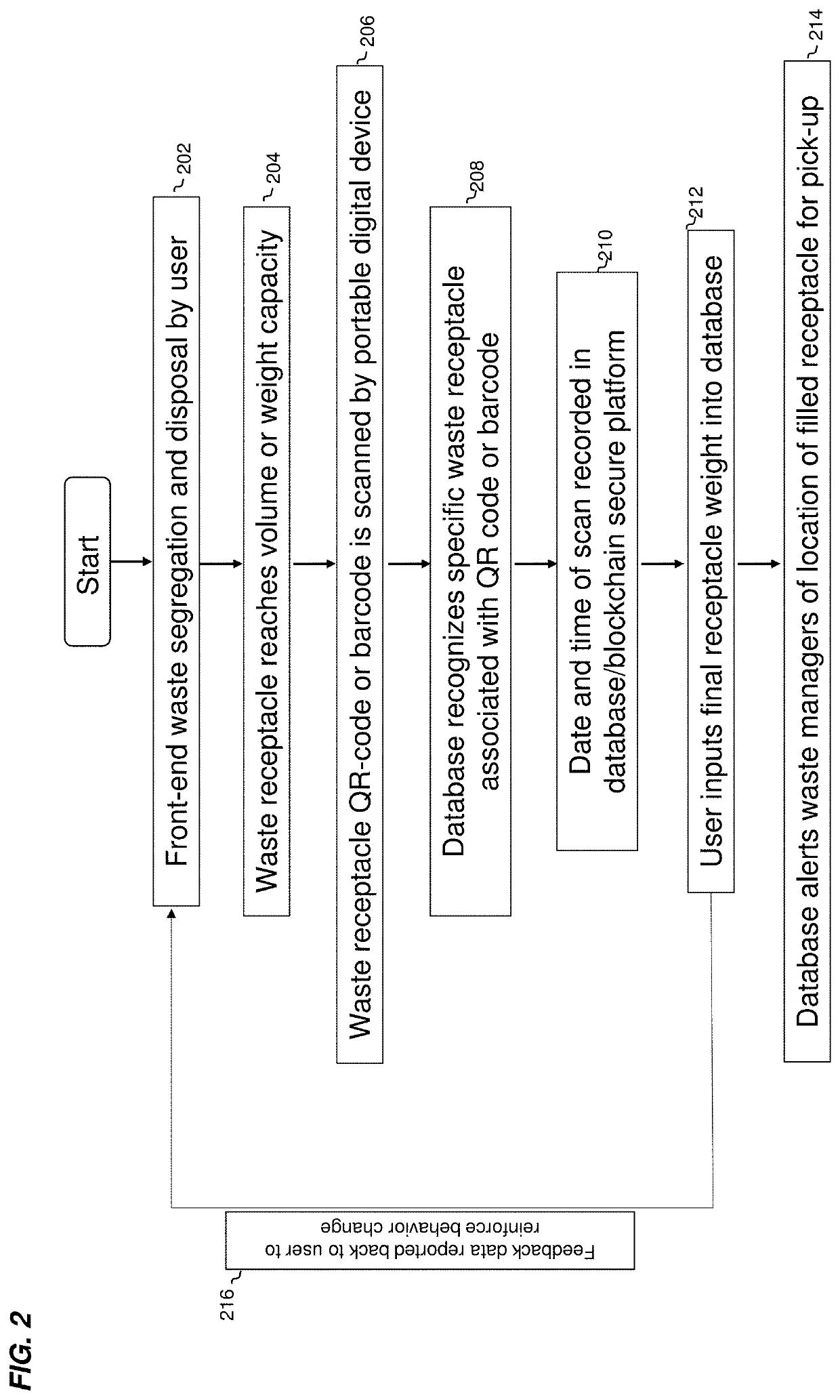Plastic articles made from the segregation, decontamination, and purification of biomedical waste plastics in a system leveraging waste production data to modify material purification and product manufacturing
a biomedical waste and plastics technology, applied in sustainable waste treatment, instruments, electromagnetic radiation sensing, etc., can solve the problems of laborious backend segregation, difficult to obtain a homogenous plastic waste stream and effectively recycle plastic, etc., to increase the homogenous polypropylene plastic stream and increase quality.
- Summary
- Abstract
- Description
- Claims
- Application Information
AI Technical Summary
Benefits of technology
Problems solved by technology
Method used
Image
Examples
Embodiment Construction
[0042]The description of commonly used terms or phrases and abbreviations are outlined below.
[0043]In this section, the reference to “one embodiment” or “an embodiment” means that a given element or feature associated with a particular embodiment is included in at least one embodiment. The reference to “one embodiment” does not necessarily include all embodiments of the disclosure. However, separate embodiments are also not mutually exclusive.
[0044]Use of the word “comprising” or “comprises” throughout this disclosure is not meant to indicate an exhaustive or exclusive description of an embodiment. Additionally, in some instances a device is “connected” or “coupled” with another item. This description may be meant to reflect a physical and / or logical relationship between items or devices. Also, there may be an intermediate(s) between said devices. For example, devices can be connected to one another through a physical or non-physical intermediate that allows for the transmission of ...
PUM
| Property | Measurement | Unit |
|---|---|---|
| weight capacity | aaaaa | aaaaa |
| temperatures | aaaaa | aaaaa |
| weight | aaaaa | aaaaa |
Abstract
Description
Claims
Application Information
 Login to View More
Login to View More - R&D
- Intellectual Property
- Life Sciences
- Materials
- Tech Scout
- Unparalleled Data Quality
- Higher Quality Content
- 60% Fewer Hallucinations
Browse by: Latest US Patents, China's latest patents, Technical Efficacy Thesaurus, Application Domain, Technology Topic, Popular Technical Reports.
© 2025 PatSnap. All rights reserved.Legal|Privacy policy|Modern Slavery Act Transparency Statement|Sitemap|About US| Contact US: help@patsnap.com



